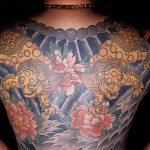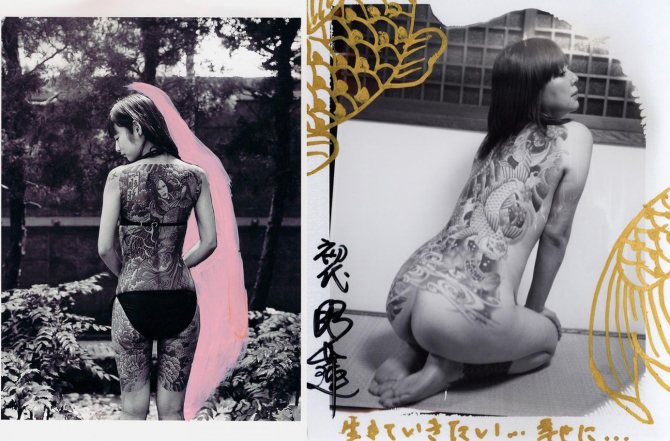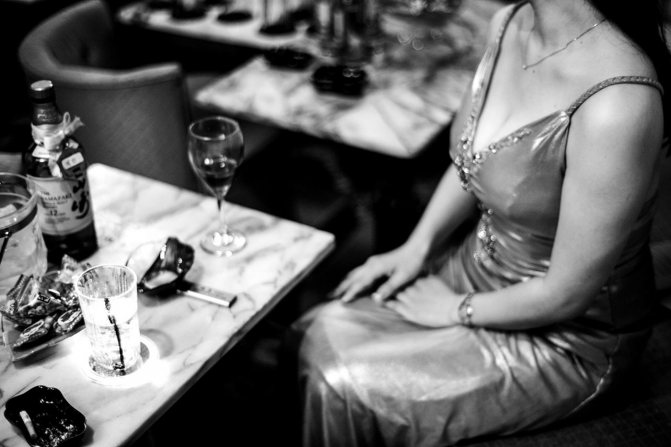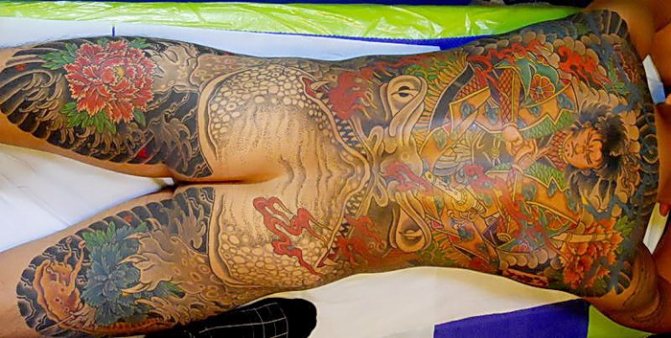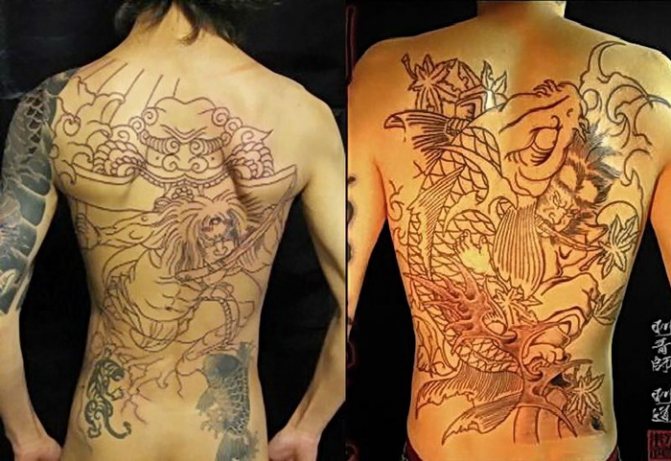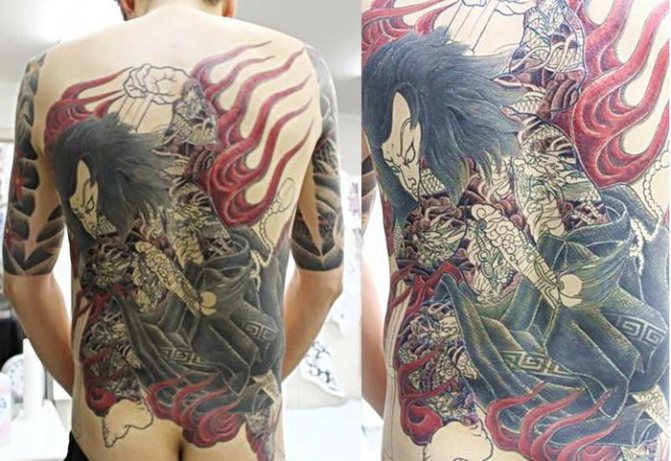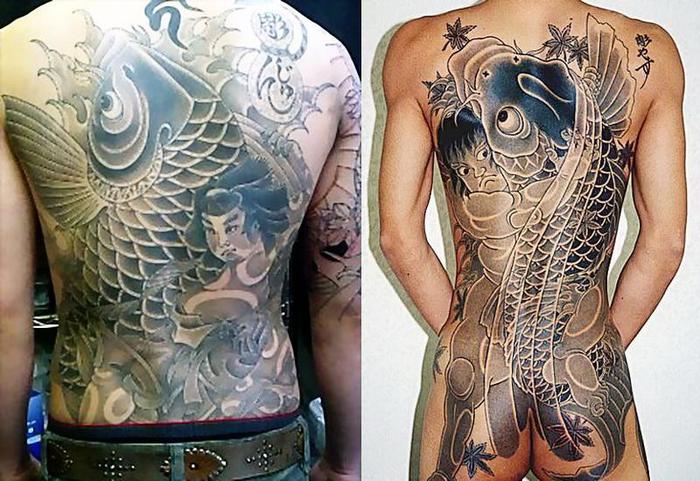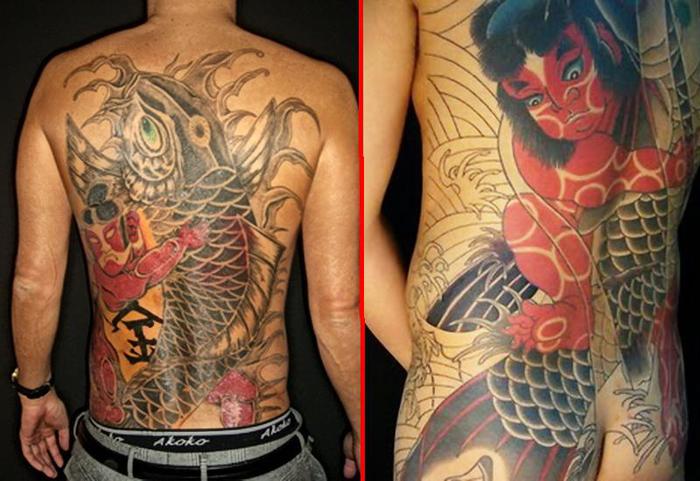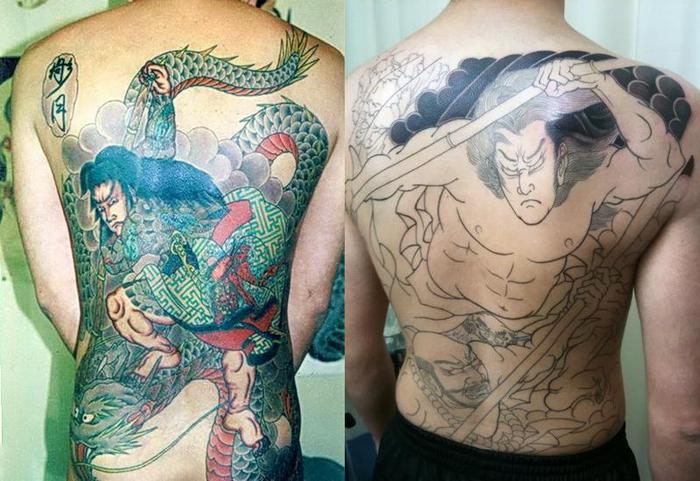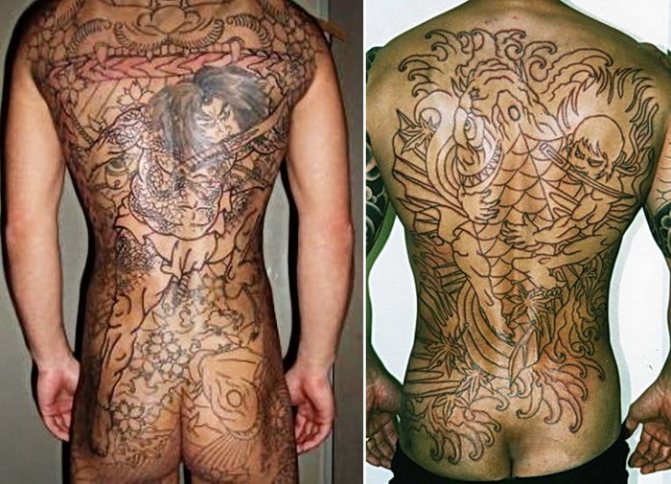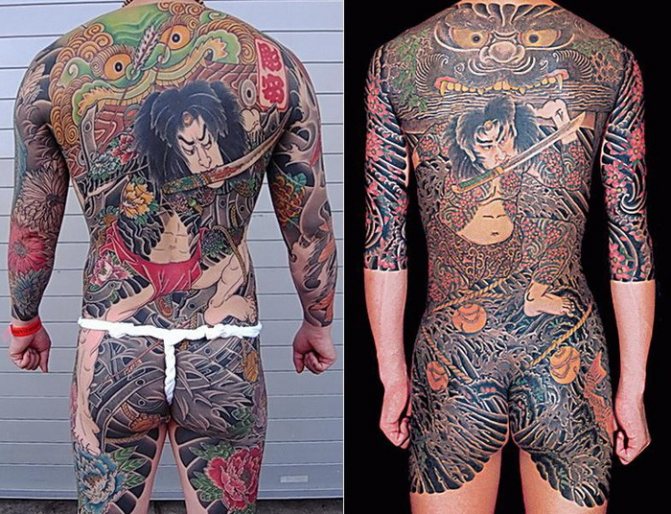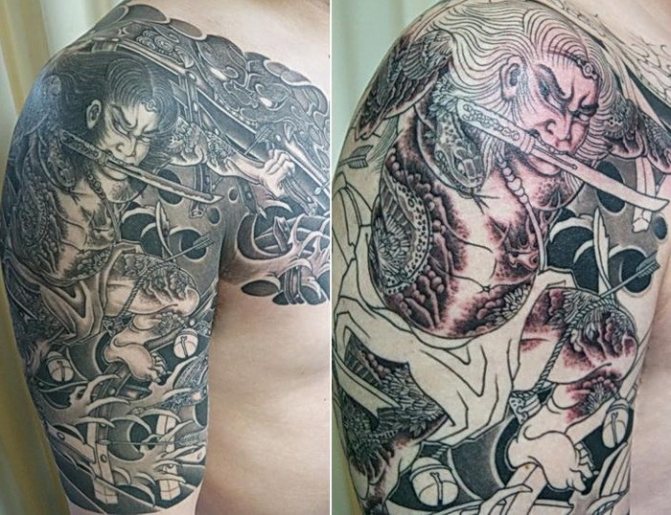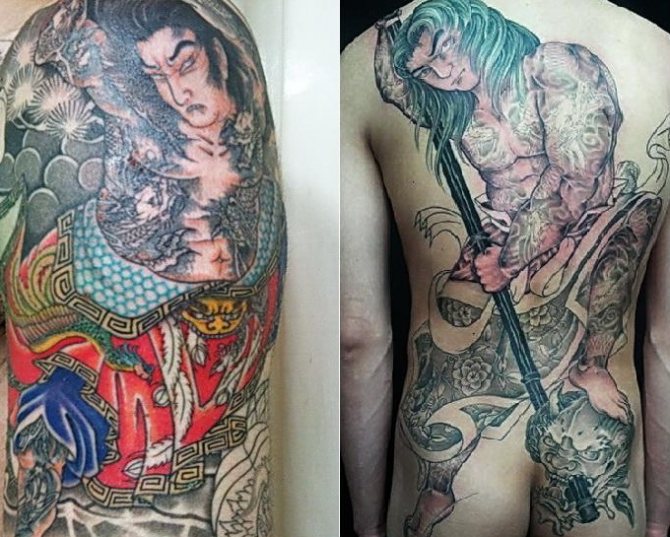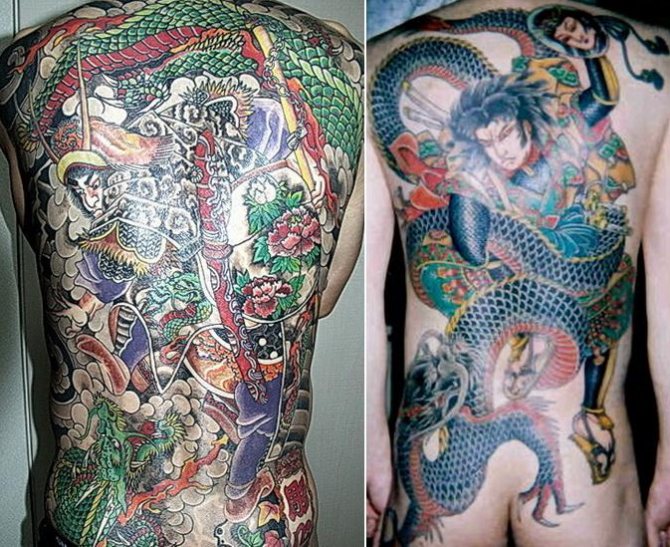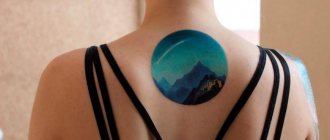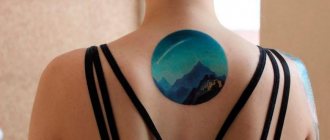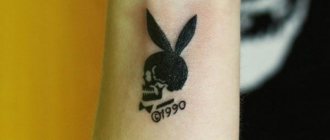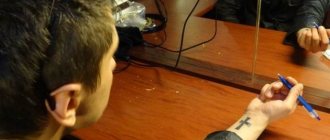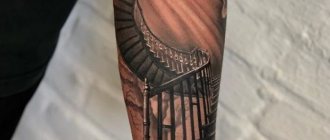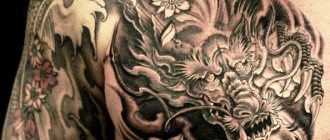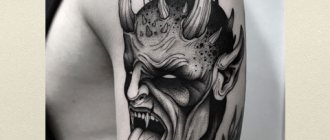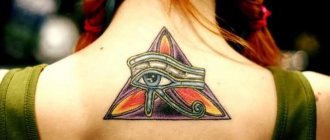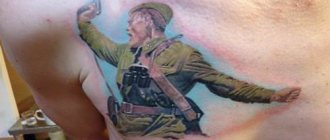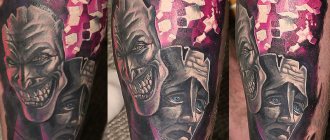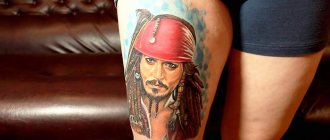Yakuza tattoos (in Japanese "konjou") are familiar to many people from movies about the life of the Japanese mafia. In them, we can see the large-scale and colorful tattoos with images of dragons, demons, samurai and geisha. Typically, these works cover most of the human body and each of these masterpieces has its own history, filled with hidden meaning and symbolism. The art of tattooing itself in Japan is called irezumi, which literally means "putting paint under the skin.
In this article we will look at the most popular motifs and meaning of tattoos yakuza, as well as tell the history of their emergence and their distinctive features.
Types
Yakuza tattoos are drawn in the style of ukiyo-e, the national Japanese engraving. This drawing shows what clan you belong to and what place you occupy.
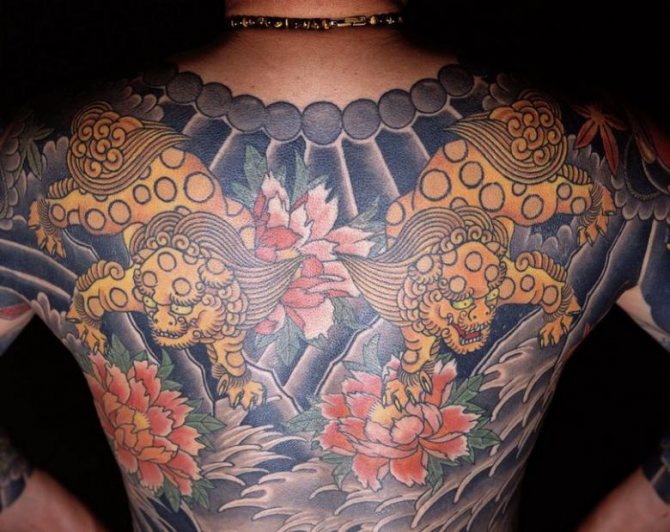
Examples and meaning of popular tattoos:
- Ryu, Thora - dragon, tiger. Such animals are noble and express power and authority. Such tattoos are applied only to the heads of the family and its members.
- Kintaro - Strongman from the myths, which fights with the carp. Shows strength and ignorance of fear. Shows giftedness of ability to fight in battles without weapons. Mostly such tattoos are worn by soldiers and fighters.
- Tyou Jun - having a sword between his teeth warrior. Shows a girl with a sword in her teeth. Symbolizes experience in wielding a sword and willpower.
- Hikeshi - Edo Dynasty fiery warrior. Illustrates the strength of will and courage. These tattoos are worn by Yakuza soldiers and auxiliaries.
- Fudo Myo is the divine guardian of Buda. He is shown with a rope and saber in different hands. Such images are painted by illegal traffickers and drug dealers.
- They are a drawing of a demon. Quite a few are shown with the hieroglyph "tomoe" - the meaning of beginning and end. Such you can see, and killers and assassins.
- Hagoromo-tennyo is a maiden from the sky. Represents a marvelous maiden. These tattoos are used to portray perverts, people who steal girls, and yakuza accomplices.
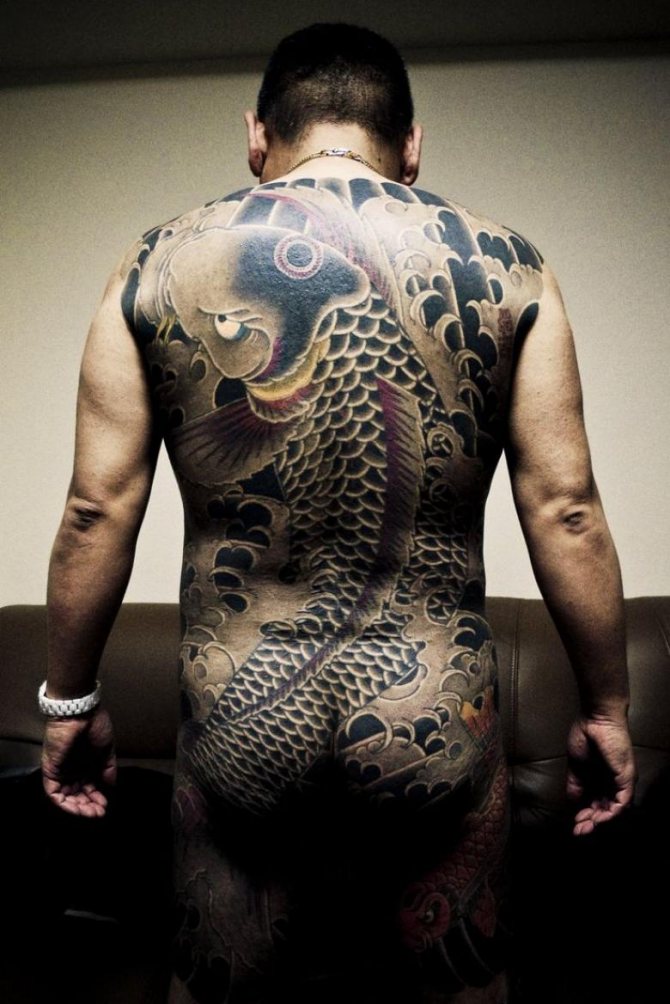

Naturally, these are not all yakuza tattoos. They express special symbolism. Cherry blossoms represent a soldier's short life and maple leaves represent tenacity and perseverance.
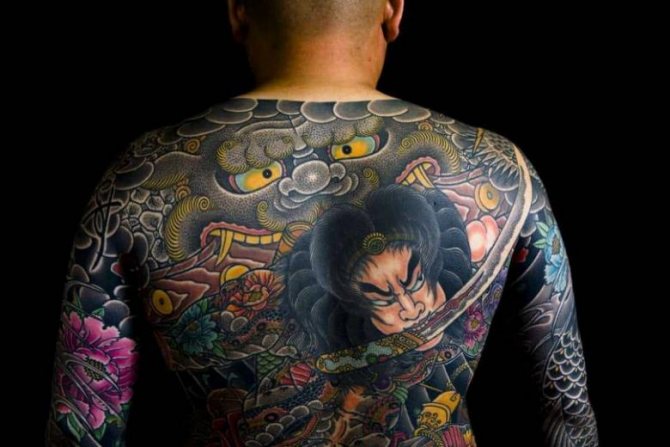

Meaning
And Japanese culture is known for its symbolism. All images had their own meaning.
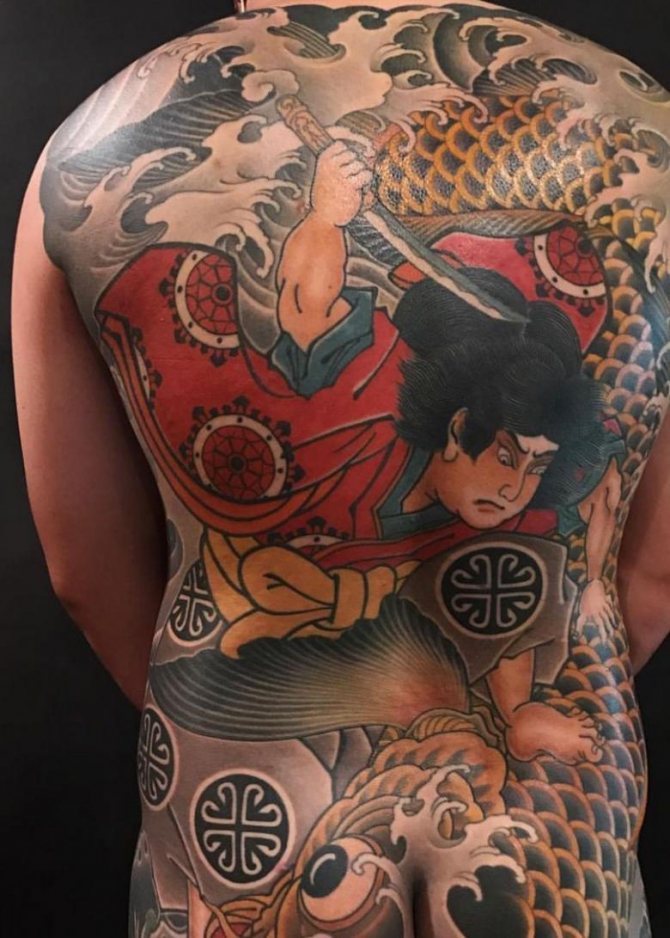

300 years ago, there were Japanese gangs, large-scale application of tattoos covering the whole body was considered a test of courage.
In the 1700s, images were applied with needles,
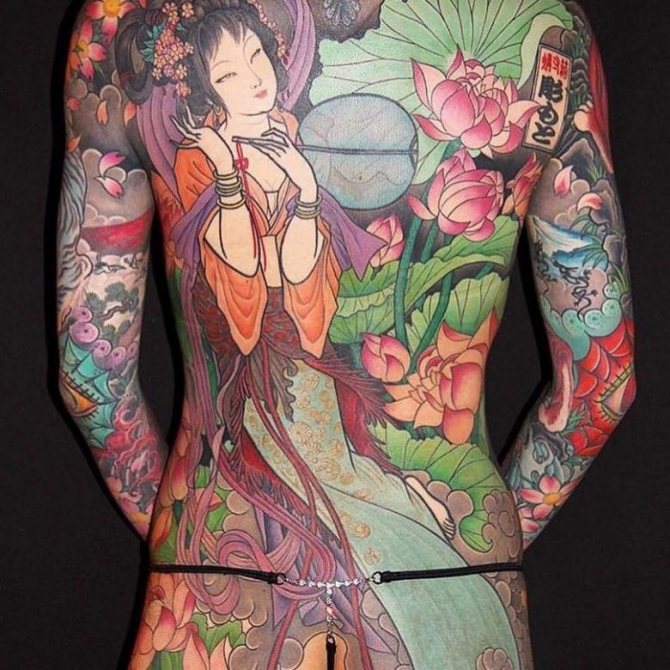

Even in the 1700s, illustrations were drawn with individual needles, it was a painful and grueling process. Now in the 21st century, some mobsters use the old-fashioned way.
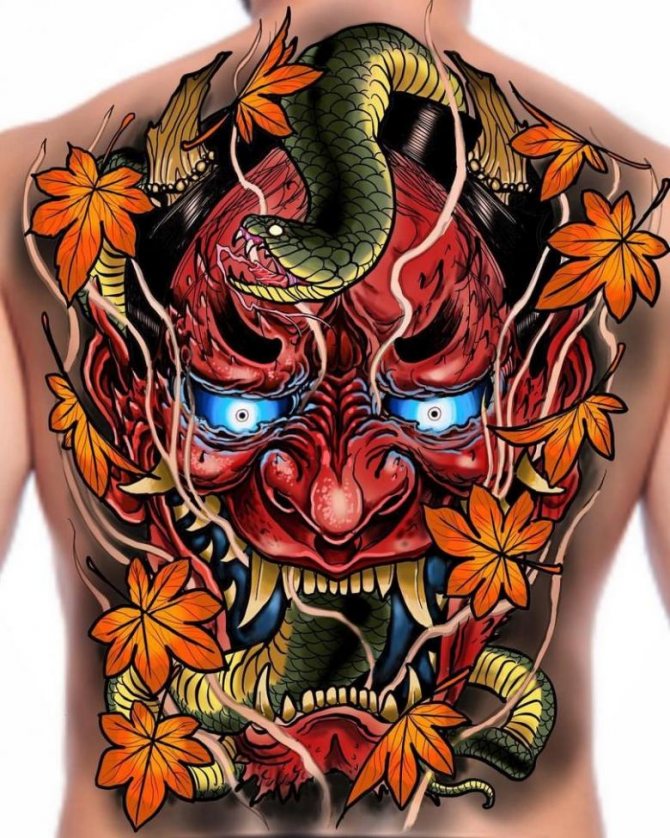

Security is the second meaning of tattoos. After all, such a large-scale tattoo takes a huge amount of money. These illustrations are printed gradually, over a lifetime and do not live long. Also, tattoos were applied to the wives and mistresses of mobsters, which denotes their affiliation with the mafia.
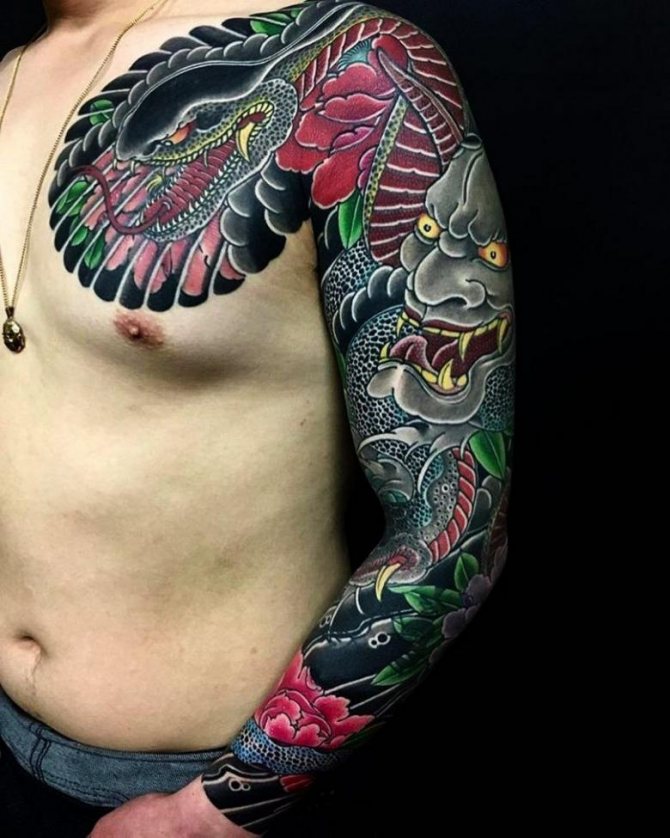

Most participants want to. Experts and investigators in Japan Kaplan and Dopru talk about young mafiosi limited to small scenarios, mostly Yakuza hands.
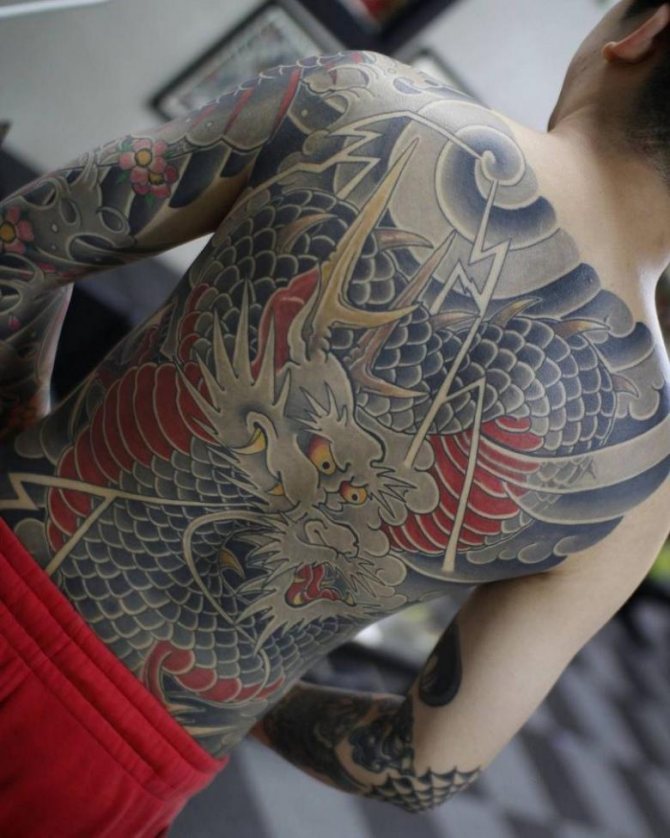

The spiritual world of Seko.
Yakuza for a woman, the memory of rape and theft. The middle of the tattoos is on the shoulder on the left. Drawing of the Muromachi time, with a sword in the woman's mouth and an open bra. Seko's soul is open. One woman told how, when she was young, her father used to pay with it.
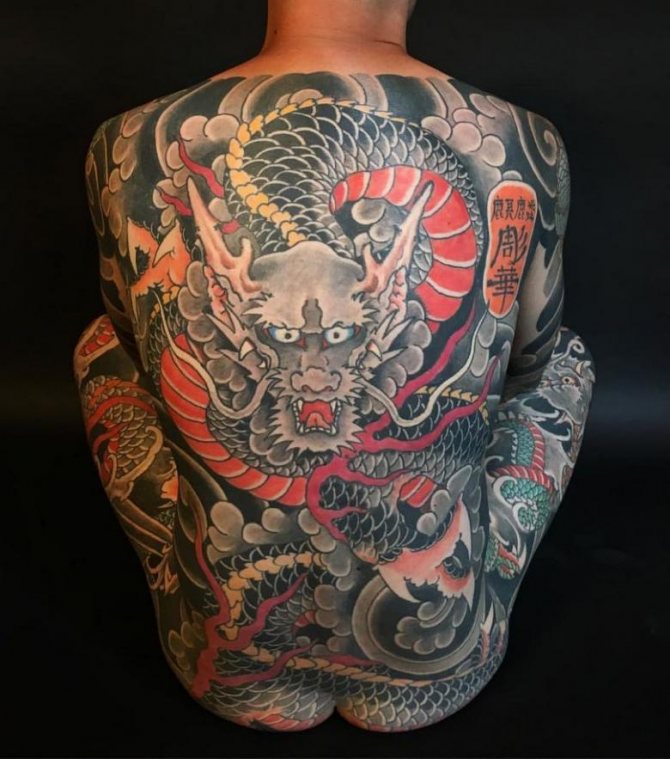

Naturally, the Yakuza tattoo, has already lost an important symbolization from the old days. Still, there are a large number of survivors, and not only Japanese. People who prefer this kind of symbolism and recreate it on their bodies. People who don't have the courage to paint themselves with some kind of tattoo. The Japanese are a people who observe their traditions. And to this day, they have not changed.
The knight's organization
Irzumi - the names of the tattoos on men. In Los Angeles, one of the Yakuza clans operates. The main headquarters is in Hawaii, the location between America and Japan. Guns and drugs are present, etc.
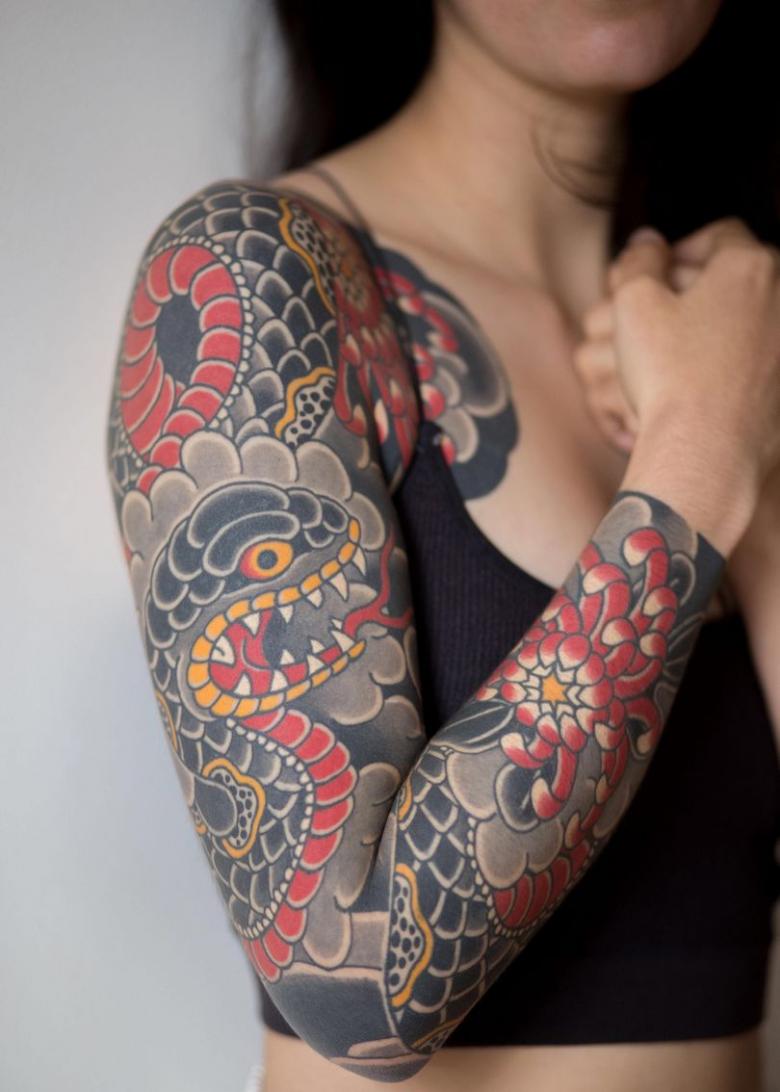

U.S. intelligence agencies are seriously concerned about the occupation of the Japanese mafia, which even added its ringleaders as part of the subordination with the formed criminality. Fascinatingly, the Yakuza themselves show themselves differently, nicknaming the Nike Danai. Translated from Japanese, this means "knightly organization.
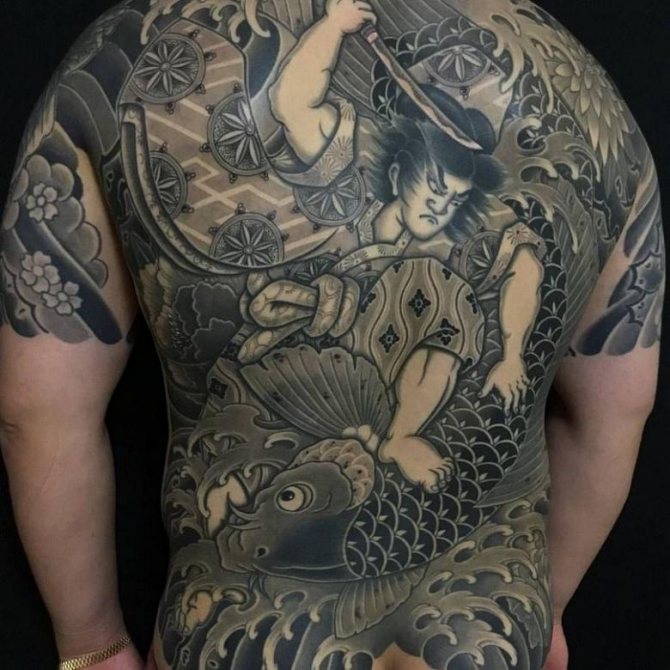

It's no secret that knights were, again, composed only of males. Are there no girls among the Yakuza at all? As it turned out, there are, and tattoos on the bodies of some of them are also found.
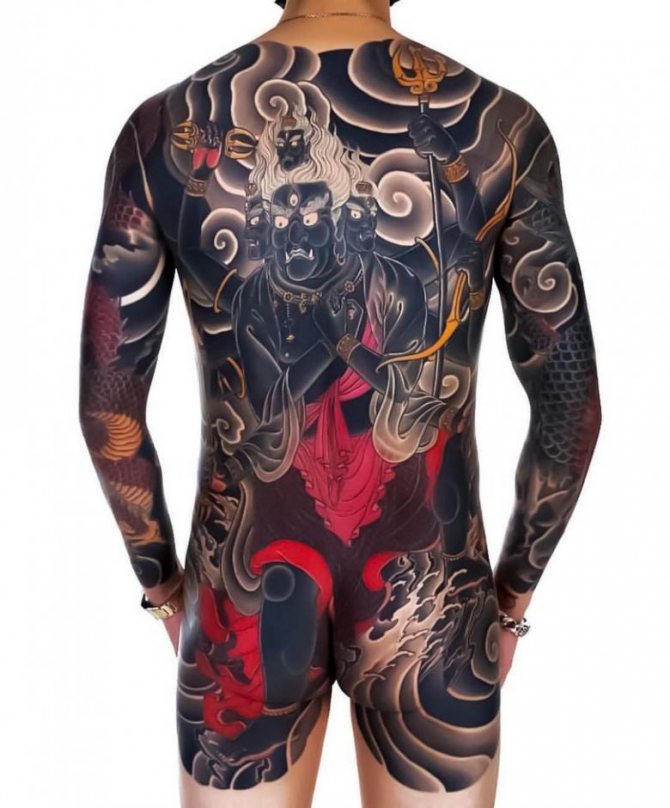

What do the tattoos in the Yakuza series mean?
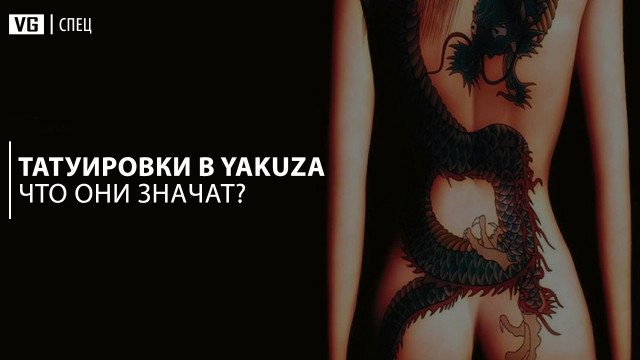

► Bravery and strength, intelligence and power - let's talk about the meaning of tattoos in the famous Japanese franchise.
В Japan
Yakuza and tattoos are inseparable. Of course, not every gangster has a tattoo and not every hackneyed person is a gangster. But when pop culture starts depicting the underworld, the anti-heroes always have a tattoo. An example of this is the series
Yakuza .
.
The Japanese are very fond of symbolism. They almost never tattoo for the sake of beauty, there is a story and purpose behind each image. The developers of Yakuza
respected tradition and turned to a tattoo artist
Kazuaki Kitamure
whose work has been used in all parts of the series. In addition, character tattoos change from game to game and reflect the changed character traits and their relationships with friends or enemies.
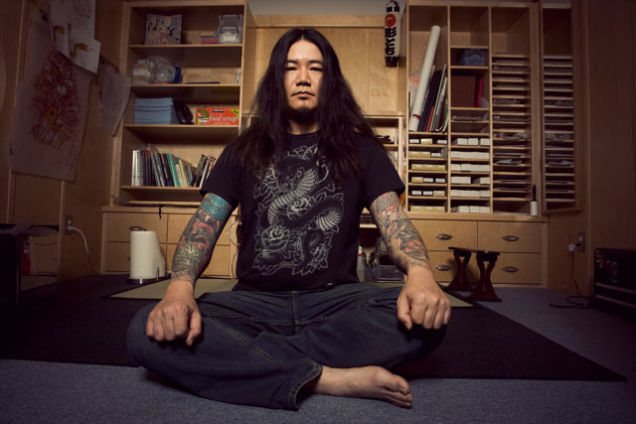

In Yakuza 0, for example, we see Kazuma Kiryu
и
Akira Nishikyama
с
sujibori
. With this technique, only the outlines of the drawing are applied. That's how the developers show us: the story of these guys is just beginning.
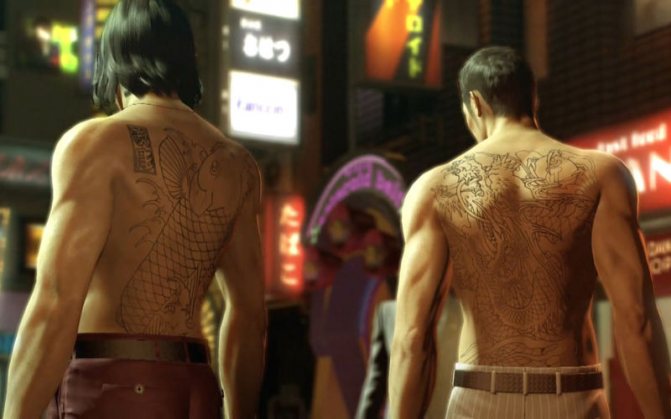

Akira Nishikyama
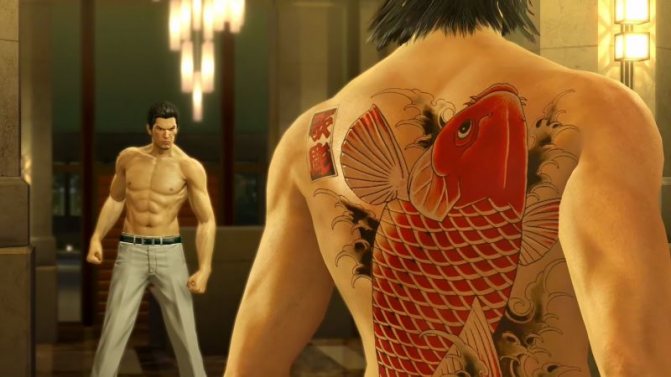

The koi carp, or brocade carp, symbolizes strength and courage. In mythology, this fish is closely associated with dragons. Asian legends tell of a koi that was able to pass through the river rapids of the the Huanghe
(and turn into a dragon. However, when exactly the threshold received the name "Dragon Gate" - before or after transformation - history is silent.
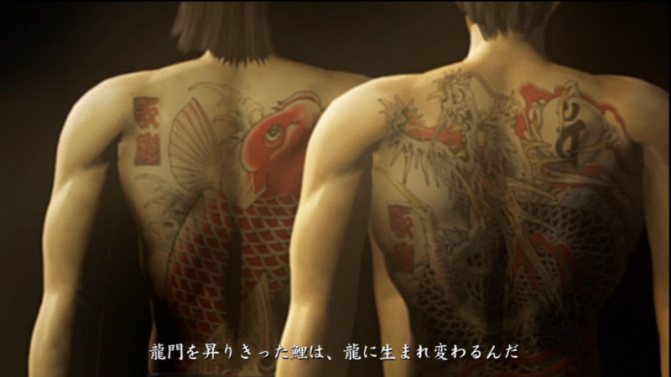

As in the case of the dragon on the back Kiryu
, the carp is made in the style of
nukibori
, with no background. The tattoo shows the koi jumping out, striving upward - by the folded in
Yakuza
tradition, it emphasizes the importance of the character and his attitude towards the main character.
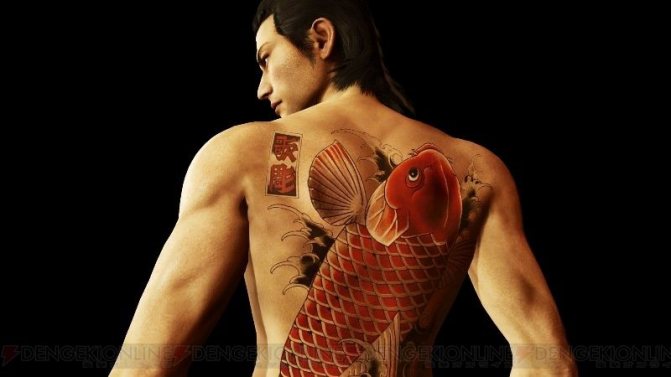

Since ancient times the color red in Japanese culture has been associated with strong men, real males because of the harmful pigments it contains. Now Japanese tattoo artists use safe synthetic ink, as in the West
. However, red and black still retain their significance in the
Land of the Rising Sun
and make the drawing on the back
Nishikyama
is particularly impressive.
Daigo Dojima
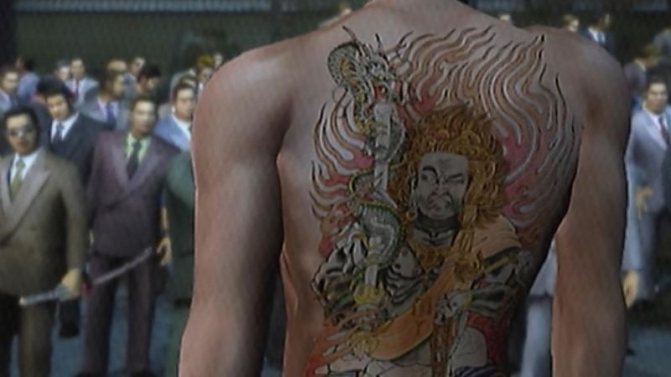

On the back of Dojima
is
Achala
- a wrathful guardian deity in Buddhist mythology. His name literally reads "immovable. The sword in his right hand signifies intelligence and power, the lash in his right hand the harness with which
Achala
binds all evil things and pulls people who are mired in their passions.
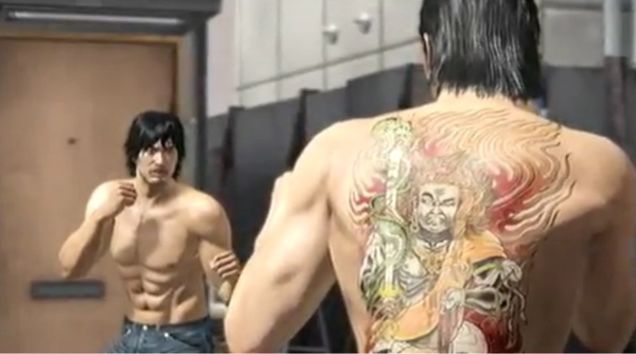

Achala
depicted in fire, which symbolizes purification. In esoteric Buddhism, there are fire ceremonies that, if the lore is to be believed, can be used to destroy negative energy.
Goro Majima
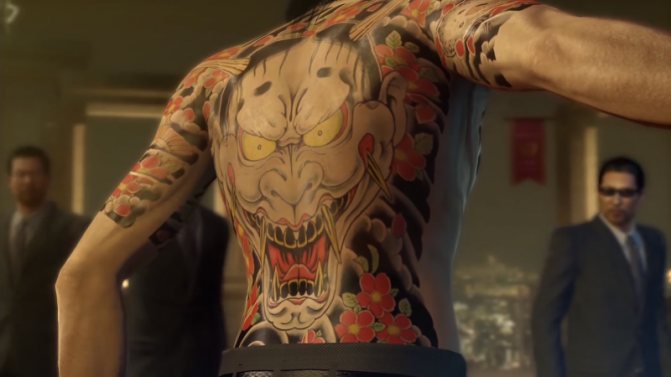

On the back of the Goro
- A large tattoo of a hannya mask and a white serpent. In Japanese folklore, these masks were used in theatrical performances to refer to women who turned into monsters due to jealousy of their beloved men. Samurai
of the Land of the Rising Sun
used hannya masks as amulets because they believed that even fallen angels would protect them in battle.
В Noh Theater
red masks were usually worn by lower-class characters. The upper classes preferred white. White snakes symbolized good luck and awakening from sleep. That is why they are often depicted together with blooming spring flowers. Since snakes in the past were considered immortal creatures, in the composition they reflect the confrontation of eternity with the fleeting.
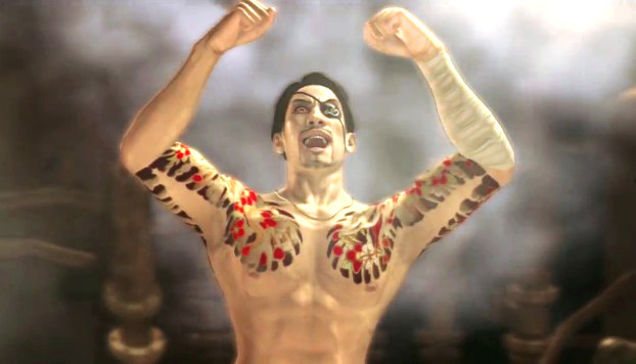

One can see that the armpits of Mazzima
Mazzima's armpits have been spared the tattoos. There are two reasons for this: firstly, it is simply very painful, and secondly, in the past, bandits received punitive tattoos just on this part of the arm. Therefore, in the late 19th century, tattoo lovers left this area open to avoid suspicion. Since then, this has become a tradition, but prejudice is slowly dying away and people are covering this area for aesthetic reasons.
Kazuma Kiryu.
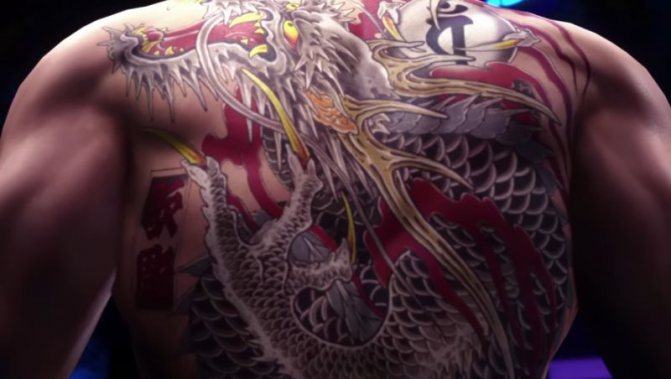

The protagonist of the series. Yakuza
has a huge dragon on his back. The tattoo has no background and is done in a
nukibori
.
Dragons are one of the four legendary animals, according to Asian mythology. They are said to be able to control the elements of water and air. You can see three-fingered dragons in Japan and four-fingered or five-fingered dragons in China. In one of its limbs, the dragon holds a ball with a sign from the Sanskrit language.
In esoteric schools of Buddhism, this symbol refers to ...the Vairochana Buddha...
...one of the five...
Buddhas of Wisdom.
.
Vairochana
symbolizes the purity and emptiness of the awakened mind.
Taiga Saejima.
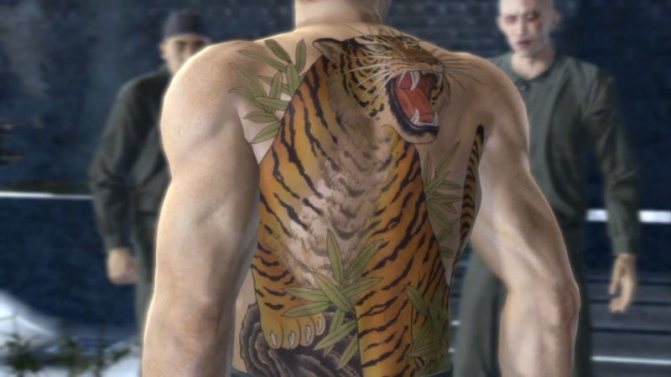

Of course, a guy with the name Taiga
(a consonance with tiger, ed.) would have a tiger on his back. This character's name is translated from Japanese as "big river" and has nothing to do with the animal.
Tigers, however, are not found in Japan
. Their images came to them from Chinese culture, and for many centuries these animals have been considered in the Land of the Rising Sun.
Land of the Rising Sun
mythical.
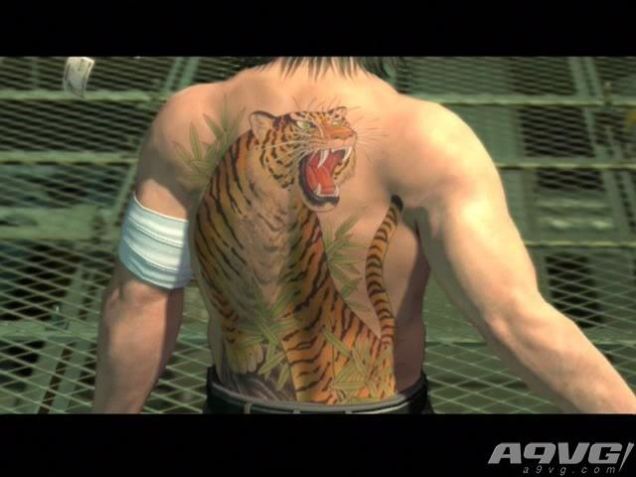

We see an image of a tiger on its back, standing on a rock surrounded by bamboo thickets. The stone symbolizes strength, as does bamboo, which is known for its strength and flexibility. It was also believed that only a tiger could get through the dense bamboo forest.
Source
Tags: ps3
,
ps4
,
yakuza
,
yakuza 0
,
special
,
tattoos
